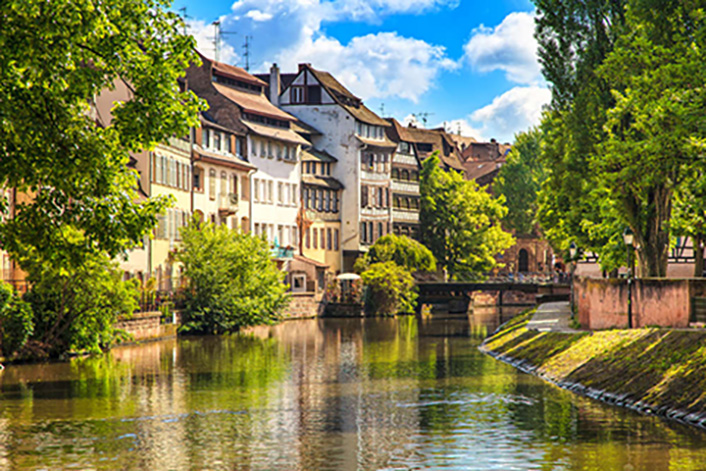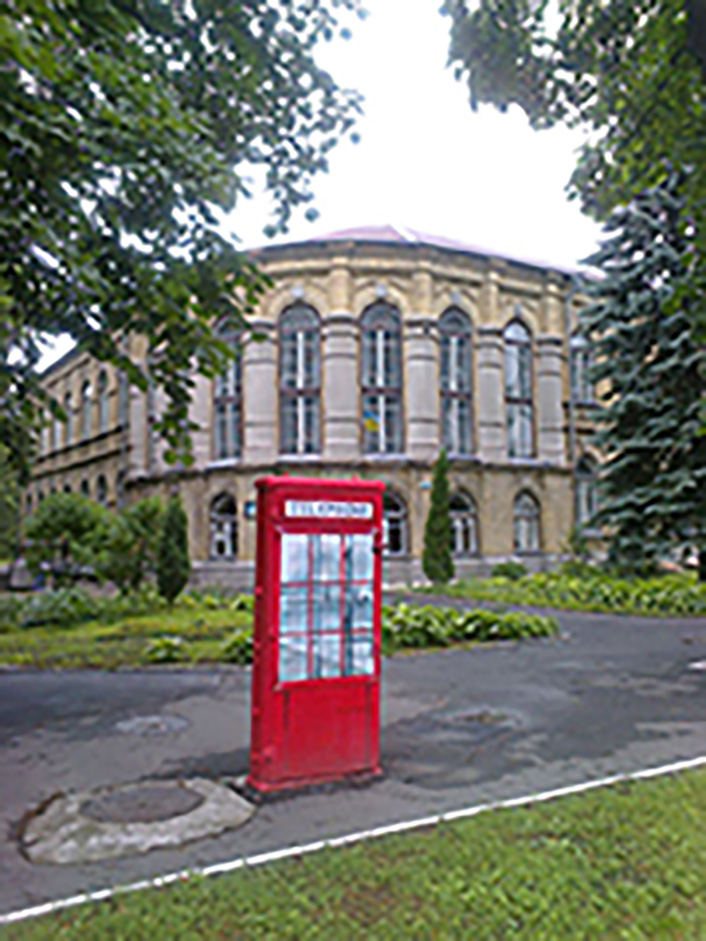How to travel from STRASBOURG to ZOLOTONOSHA?
STRASBOURG

Strasbourg is an important point on the map of Europe, both today and in the past. This particular town was actually fought over from the beginning. Until the twelfth year of our era, the town was ruled by the Gauls, but then it was forcibly captured by Roman legionaries. They erected a fort there for crossing the Rhine. For the next five centuries the Roman Empire successfully defended itself against barbarian attacks. However, in the year five hundred they succumbed to the Germanic tribes, who, alongside the Asiatic Huns, captured the fort and renamed it from Argentoratum, a name they did not understand, to Stratœburgus, a town on the beaten road.
From then on, the city was ruled by the Franks. Or at least until the end of the seventeenth century. Then Louis XIV annexed Strasbourg to the Kingdom of France. Of course, this was not the end of the struggle for this particular locality.
Proof can be found in the rivalry between Strasbourg and the German city of Kehl, which competed for supremacy in the region. It was only years later that cooperation was established and a bridge was erected between the cities. And it existed as a symbol of cooperation until World War II. And once the rumblings of the cannons ceased, it was erected anew, with European funds and the involvement of both sides. Since then, the bridge over the ren has been used to move tens of thousands of cars a day!
By bus to Strasbourg!
One of the best ways to get to Strasbourg, of course, in our opinion, is by bus. Our buses to Strasbourg stop at Place de l "Etoile. It's actually the very center, so leaving the deck of our bus in a quarter of an hour you can find yourself in the old town, admire the Notre Dame Cathedral and taste the local delicacies. And Strasbourg is famous for its amazing cuisine.
Strasbourg is an important point on the map of Europe, both today and in the past. This particular town was actually fought over from the beginning. Until the twelfth year of our era, the town was ruled by the Gauls, but then it was forcibly captured by Roman legionaries. They erected a fort there for crossing the Rhine. For the next five centuries the Roman Empire successfully defended itself against barbarian attacks. However, in the year five hundred they succumbed to the Germanic tribes, who, alongside the Asiatic Huns, captured the fort and renamed it from Argentoratum, a name they did not understand, to Stratœburgus, a town on the beaten road.
From then on, the city was ruled by the Franks. Or at least until the end of the seventeenth century. Then Louis XIV annexed Strasbourg to the Kingdom of France. Of course, this was not the end of the struggle for this particular locality.
Proof can be found in the rivalry between Strasbourg and the German city of Kehl, which competed for supremacy in the region. It was only years later that cooperation was established and a bridge was erected between the cities. And it existed as a symbol of cooperation until World War II. And once the rumblings of the cannons ceased, it was erected anew, with European funds and the involvement of both sides. Since then, the bridge over the ren has been used to move tens of thousands of cars a day!
By bus to Strasbourg!
One of the best ways to get to Strasbourg, of course, in our opinion, is by bus. Our buses to Strasbourg stop at Place de l "Etoile. It's actually the very center, so leaving the deck of our bus in a quarter of an hour you can find yourself in the old town, admire the Notre Dame Cathedral and taste the local delicacies. And Strasbourg is famous for its amazing cuisine.
ZOLOTONOSHA

Zlotonosha (ukr. Золотоноша) is a city in central Ukraine, located in Chernihiv Oblast, on the Sysha River. It is one of the most important cities in the region, with a rich history and importance in the past, especially in administrative and commercial terms.
Today Zlotonosha is an industrial and administrative city with a population of about 20,000. The city is an important point on the map of the region, having a convenient location and developed transportation infrastructure.
Zlotosha, although not a major tourist center, retains its historical character and performs administrative functions for nearby villages and smaller towns. The town's modern economy is based on industry and agriculture.
Zlotosha has several places of interest to attract tourists:
Holy Trinity Church - one of the city's most important religious monuments, with beautiful architecture.
Historical monuments and buildings - Zlotonosha has preserved several buildings from the Middle Ages and the 18th century that testify to its history.
Sysha River - the picturesque river area can be an interesting place for walking and relaxing in nature.
Zlotonosha (ukr. Золотоноша) is a city in central Ukraine, located in Chernihiv Oblast, on the Sysha River. It is one of the most important cities in the region, with a rich history and importance in the past, especially in administrative and commercial terms.
Today Zlotonosha is an industrial and administrative city with a population of about 20,000. The city is an important point on the map of the region, having a convenient location and developed transportation infrastructure.
Zlotosha, although not a major tourist center, retains its historical character and performs administrative functions for nearby villages and smaller towns. The town's modern economy is based on industry and agriculture.
Zlotosha has several places of interest to attract tourists:
Holy Trinity Church - one of the city's most important religious monuments, with beautiful architecture.
Historical monuments and buildings - Zlotonosha has preserved several buildings from the Middle Ages and the 18th century that testify to its history.
Sysha River - the picturesque river area can be an interesting place for walking and relaxing in nature.
© 2025 Sindbad
Technical support, assistance, payments: Sindbad IT
© 2025 Sindbad
Technical support, assistance, payments: Sindbad IT
